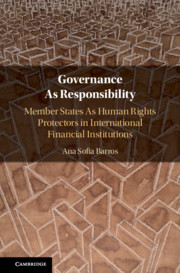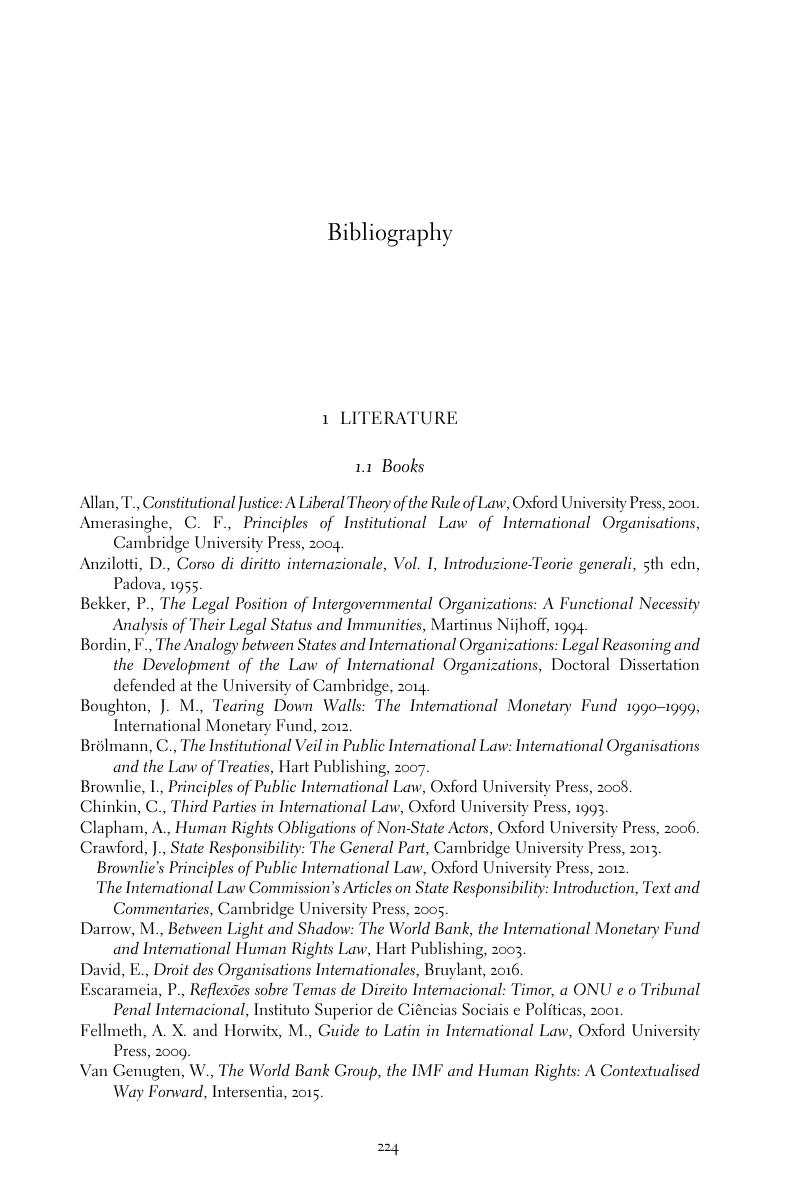 Governance As Responsibility
Governance As Responsibility Book contents
- Governance As Responsibility
- Governance As Responsibility
- Copyright page
- Dedication
- Contents
- Foreword
- Preface
- Acknowledgements
- Abbreviations
- Introduction
- I The Relationship between International (Financial) Institutions and Their Member States
- II Accounting for the Governance Role of Member States of International Financial Institutions in the Regime of International Responsibility
- III Member States As Human Rights Protectors in International Financial Institutions: Matching Governance with Responsibility
- Conclusion
- Bibliography
- Index
- References
Bibliography
Published online by Cambridge University Press: 28 June 2019
- Governance As Responsibility
- Governance As Responsibility
- Copyright page
- Dedication
- Contents
- Foreword
- Preface
- Acknowledgements
- Abbreviations
- Introduction
- I The Relationship between International (Financial) Institutions and Their Member States
- II Accounting for the Governance Role of Member States of International Financial Institutions in the Regime of International Responsibility
- III Member States As Human Rights Protectors in International Financial Institutions: Matching Governance with Responsibility
- Conclusion
- Bibliography
- Index
- References
Summary

- Type
- Chapter
- Information
- Governance As ResponsibilityMember States As Human Rights Protectors in International Financial Institutions, pp. 224 - 258Publisher: Cambridge University PressPrint publication year: 2019


